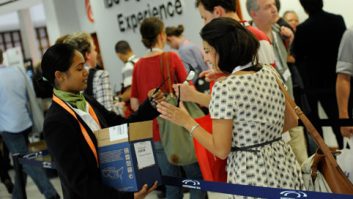“Should we go for UHD-1 or wait for UHD-2?” asked the EBU’s Hans Hoffmann. “When will services start? When will consumers buy new displays? But should we wait for a more robust and satisfactory set of technical demands to be in place before we start?”
Hoffmann admitted that UHD-1 (and 2) have various subsets and standards, and immense confusion in the market not least with a plethora of ‘4K’ or ‘Ultra-HD’ logos and claimed standards. “And it is getting worse as displays enter the retail chain.”
Paul Gray of DisplaySearch delivered his latest 4K display sales forecasts, which in terms of anticipated sales are impressive: 30 million in 2015 (12-15 million in China), 45 million in 2016 and62 million in 2017.
China will be the world’s largest market for 4K displays, followed by North America and Europe. Gray said that volume sales will be at 55” and above.
Hoffmann’s expert panel also heard from the NexTV Forum’s Kaiya Motohashi. He told IBC delegates that Japan’s first 4K channel went live on 2 June showing six hours a day of drama, sports, travelogues and natural history programming. During early 2016 it would be broadcasting an experimental 8K channel by satellite as well as two or three channels in 4K. “By 2018 there will be several 4K channels on air as well as 8K channels, tapping into interest from the Winter Olympics, the FIFA soccer from Russia and then the 2020 Olympics from Tokyo.
As to the inevitable 4K quality/standards confusion, Sky Germany’s Stephan Heimbecher, speaking as the co-chair of the FAME (Forum for Advanced Media in Europe), admitted that “UHD-1 has a momentum in Europe today.”
Andy Quested, the BBC’s head of technology for HD & 3D, said the BBC wanted to go back 30 years! “We’d like to be in a medium where natural history and drama were shot on a camera that had 16-18 stops of dynamic range. Our first transitions from film to video had everyone screaming that they couldn’t work with such a tight dynamic range. It is only now that we are seeing cameras emerge that can get close to what film could do.”
BSkyB’s chief engineer Chris Johns, summed up the dilemma: “4K is a bit like an airline. HDTV is obviously economy class. Everyone has it and they can fly anywhere in the world. But it’s nicer in premium economy where you can get UHD-1/Phase 1. Then in first class, it’s UHD1-Phase 2. Of course, 8K then means you are in your own executive jet.”






